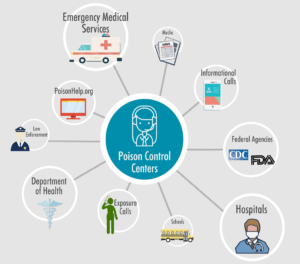Update On Fentanyl in Georgia
The August newsletter from the National Drug Early Warning System (NDEWS) News describes how the Georgia Poison Center (GPC) played a crucial role in the early detection of deadly, fentanyl-laced fake Percocet in Georgia. NDEWS describes how a call from an emergency-room doctor triggered the process of identifying the cause of the poisonings and cases: “This call began a rapid response by the GPC to coordinate with key partners, identify the cause and other potentially related cases, and disseminate information to the public.”
Georgia Poison Center published a detailed press release about the June 2017 outbreak of counterfeit Percocet made from toxic fentanyl analogues.
On June 5, 2017, an emergency room doctor in Macon, Georgia called the Georgia Poison center to report a series of patients exhibiting similar and severe respiratory and central nervous system symptoms. Within hours, the details about what was causing these symptoms, counterfeit Percocet made with a pair of as-yet unidentified fentanyl analogues, had been disseminated to law enforcement and health professionals all over Georgia.
The Georgia Poison Center played a pivotal role in pulling together a quick response to initial fentanyl poisonings that happened there in June. By treating early reports as an outbreak and quickly sharing information about symptoms and patterns of exposure with law enforcement and public health representatives, The Georgia Poison Center provided a model for how to handle a deadly counterfeit drug outbreak and prevented more loss of life.
According to the Washington Post, statistics from 2016 are demonstrating how fentanyl and fentanyl analogues are driving a dramatic increase in the number of overdose deaths in the United States. They state that “The National Center for Health Statistics reported that overdose deaths reached a record 19.9 per 100,000 population in the third quarter, a big increase over the 16.7 recorded for the same three months in 2015.” Data for the last quarter of 2016 has not yet been made available by the National Center for Health Statistics.
